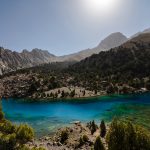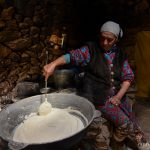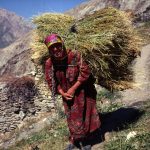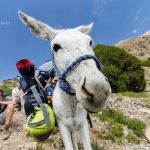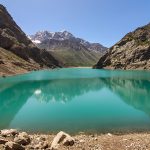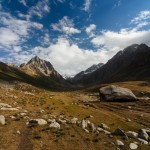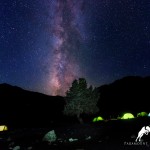Turkmenistan is the least visited and least well known of all the Central Asian republics. The country’s official position of neutrality has often in practice resulted in isolationism, and since independence the government has pursued its own path for development, with little concern for international norms. Those foreigners who do come here are often taken aback by the apparent wealth of Ashgabat — manifest in its white marble buildings, gold statues, and statement architecture — the absolute power of the President, and the eclectic rules by which the Turkmenistani people must abide.
Visits to Turkmenistan are typically limited to five days as you can then visit on a transit visa, which is relatively easy to get. This is ample time to explore Turkmenistan’s three main attractions: Ashgabat, Darvaza, and Merv.
Ashgabat is Turkmenistan’s capital city, and the centre of political, economic, and cultural activity in the country. The population has been incentivised to move here from the regions, and huge amounts of money have been spent on infrastructure. The idea is that Ashgabat should showcase to citizens and foreigners alike how rich, modern, and beautiful Turkmenistan can be. Like a Potemkin village, however, you might question what lies behind the gleaming facades, and a day or so will generally be more than enough to see everything Ashgabat has to offer.
It is outside of Ashgabat that Paramount Journey’s guides are in their element. The Darvaza Gas Crater — nicknamed “The Gates of Hell” — is rightly one of the top sites on any Central Asia bucket list. There is a vast amount of natural gas beneath the desert, and in the 1970s, drilling went wrong. The explosion blew a hole in the sand, the gas ignited, and it has been burning ever since. The crater is at its most dramatic at night, so we will arrange for you to camp out in the desert, feeling the heat of the flickering flames.
The third in Turkmenistan’s triptych of attractions is Merv, a UNESCO World Heritage Site. The mud brick ruins are slowly melting back into the sands from which they were first formed, but it is a place of incredible historic importance: until it was sacked by Genghis Khan and its population brutally murdered by the Mongols, Merv was the probably the largest city in the world.
We wouldn’t generally recommend visiting Turkmenistan as a stand alone destination, but it combines well with Uzbekistan, and the transport connections across the border are improving.
Tour details






